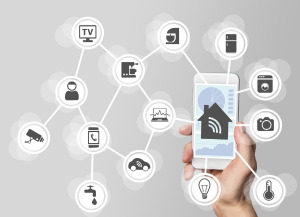
Three days before Thanksgiving, your refrigerator stops working. A short discussion with your trusted appliance repairman convinces you that it’s time for a replacement. Resigned, you head to your local big box store to compare available options.
Every refrigerator you see boasts features that you never dreamed this mundane kitchen staple might offer. Golf ball cocktail ice cubes! Built-in Keurig for your morning coffee! Internal cameras eliminating the need to open the door! Touchscreen with built-in tablet!
Wait…touchscreen with built-in tablet? A handy place to keep the family calendar and favorite recipes, along with an Alexa connection so that you can easily add items to your grocery list. Your kitchen will make the Jetsons’ kitchen seem dated.
Not so fast. That tablet with its Alexa integration logs into your home wifi network, and it’s one more access point for hackers to enter your network as well.
In fact, one of the easiest and most appealing ways for hackers to breach your network is through one of these “Internet of Things” (IoT) appliances, machines, and gadgets. Your Nest thermostat connects to that app on your phone and lets you cool the house down on your way home from work. Your washer and dryer can be started remotely because they are both connected to your home internet. Manufacturers know that these features sell products. Their perceived convenience and time-saving details appeal to consumers, but do those consumers have any idea what they’re bringing into their homes or businesses?
IoT products really began to hit the marketplace around the year 2000, with countless products from toasters to self-driving cars quickly filling the field. In the rush to meet consumer demand, manufacturers generally use older, simpler, cheaper software to run these products. The operating systems of these devices are almost always outdated and compromised by the time they come to market, and the manufacturer generally focuses on producing the next year’s model rather than patching the vulnerability in this year’s model. Furthermore, if a coffee maker manufacturer were to release an update for a product, would the consumer even be aware of it? Even if he’s notified, does he know how to apply that update himself? These unmitigated security gaps are an open invitation to cyber criminals to infiltrate your home or business network.
Just how widespread is this problem? In 2021, there were more than 10 billion unique active IoT devices.
By 2030, the number of active devices will surpass 25.4 billion. By 2025, more than 152,000 IoT devices will connect to the internet every minute. Furthermore, the economic impact of these devices will reach between $4 and $11 trillion per year. Finally, 83% of organizations utilize IoT technology in some fashion to increase efficiency.
Those 83% of businesses represent a particularly irresistible draw for cybercriminals. The coffee maker or microwave in your office break room that you’re able to control remotely connects to the same wifi that you and your colleagues use to share confidential client files and documents. These “convenient” machines are often the point of least resistance in a company’s security. They may also include necessary business equipment like copiers and security systems. Relying on your IT professional’s ability to manage these correctly is crucial to the security of your business.
For our clients, we recommend cautious use of these IoT devices, ideally isolating them from the managed network that we control.
With the advent of work-from-home situations, managing all the devices that are present became virtually impossible. We prefer to focus on verifying and protecting the user’s identity when he/she is connecting to a company network and denying entry from any other sources.
If you are concerned that the IoT devices in your office might be a threat, contact us today. We offer the most robust cybersecurity protection in Birmingham and endeavor to make every day safer from cybercrime.


